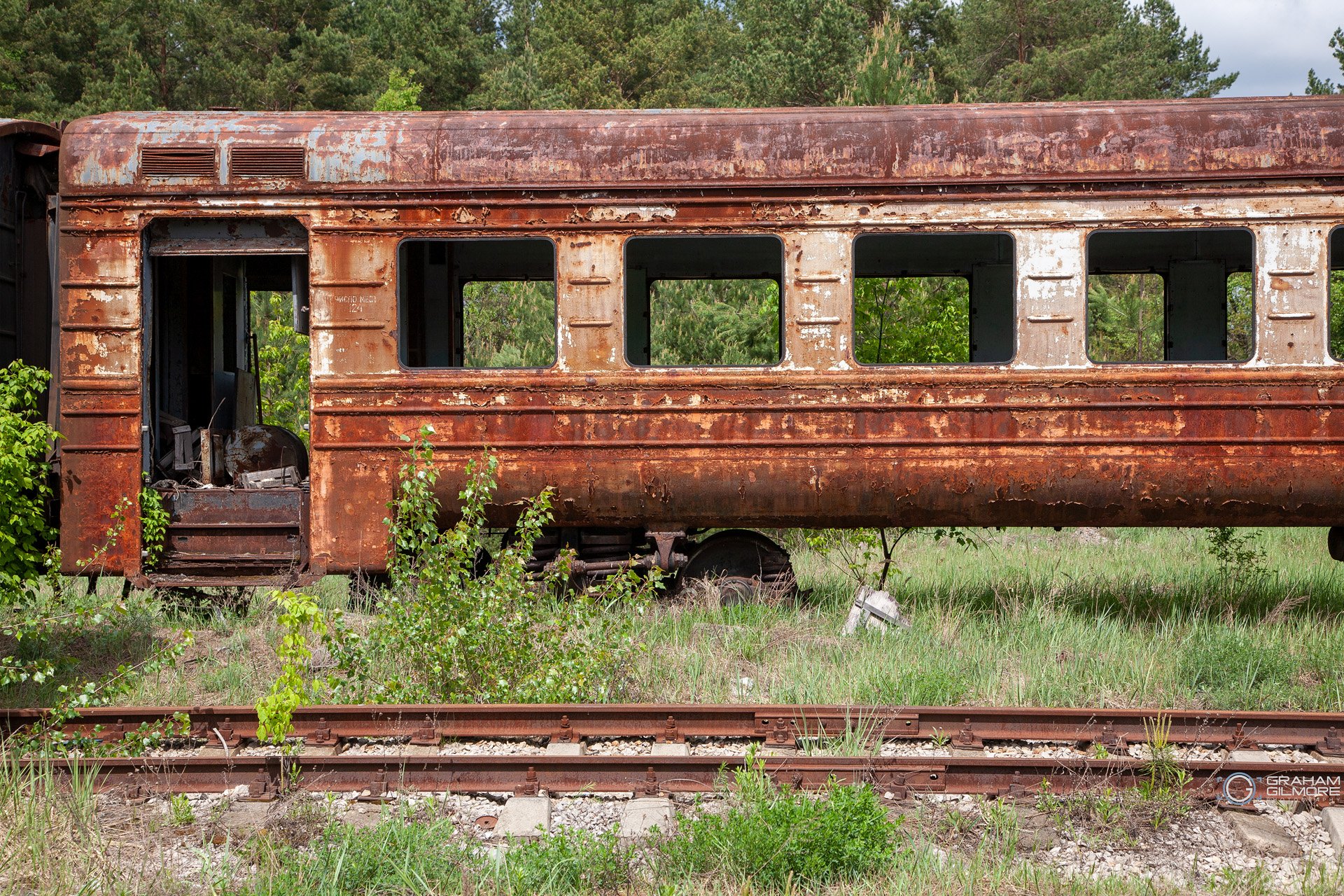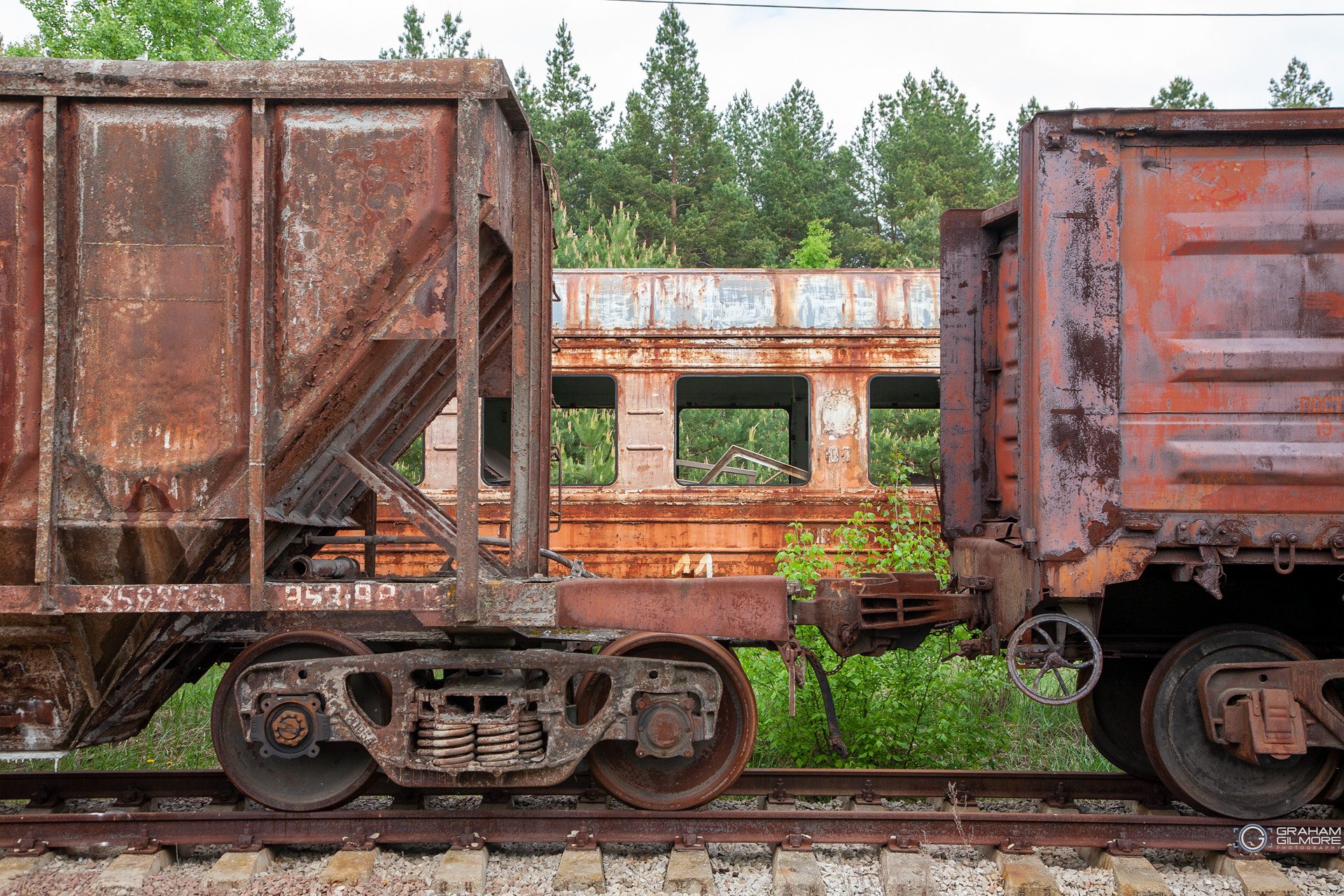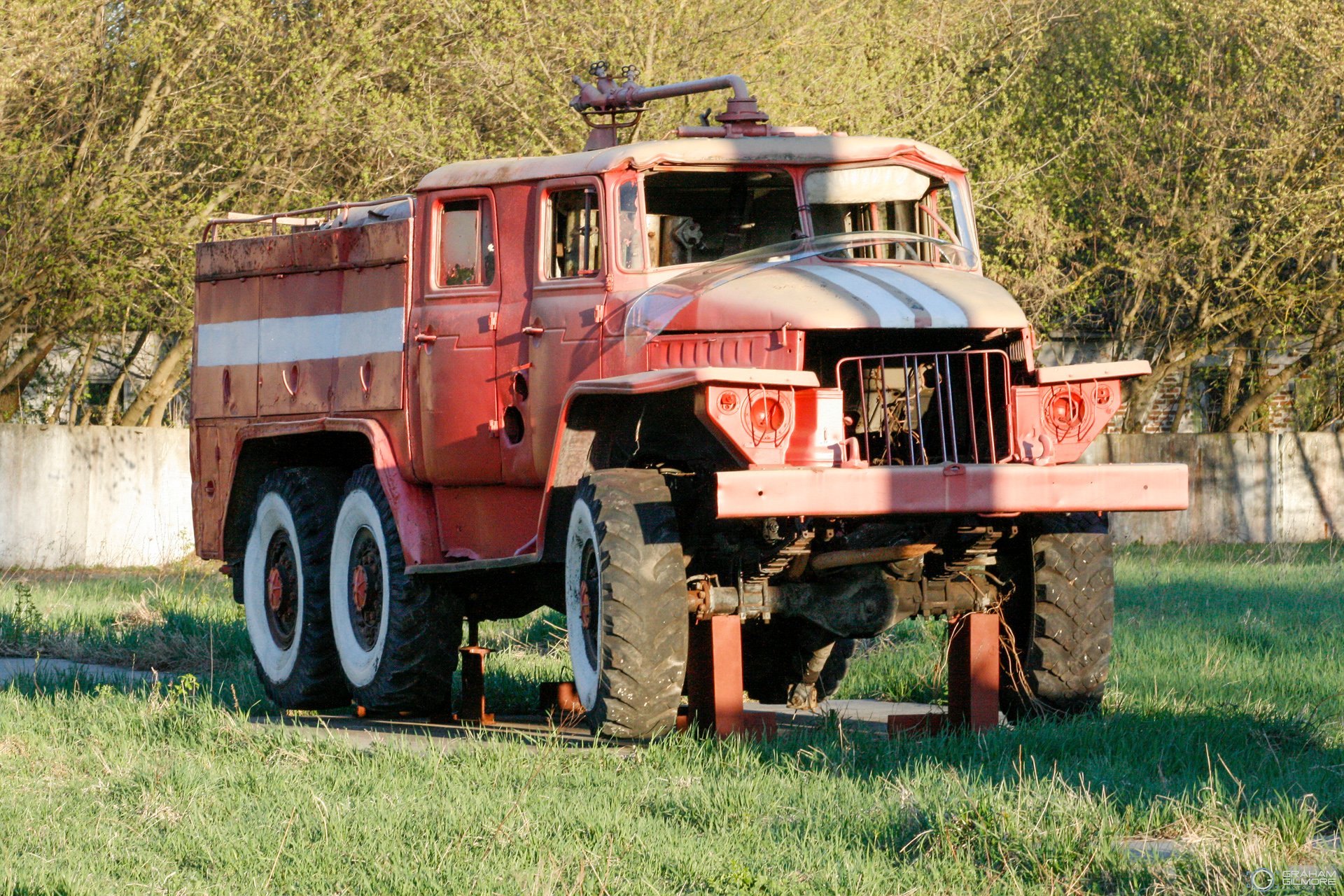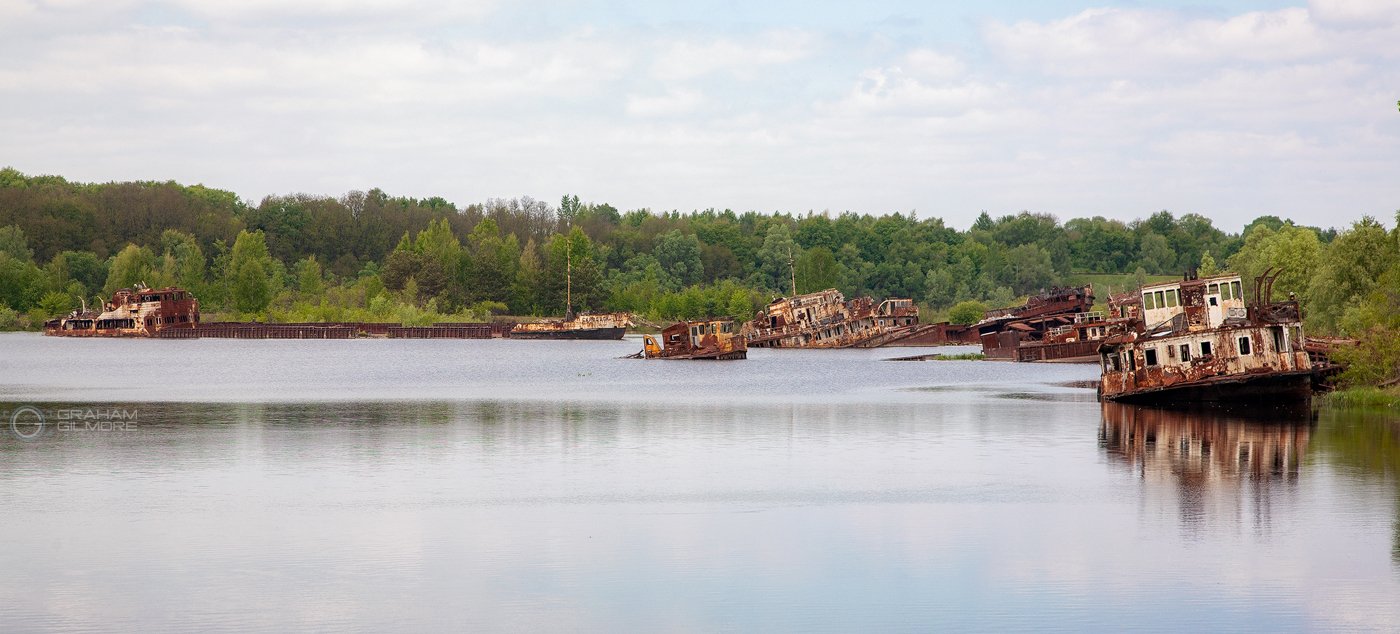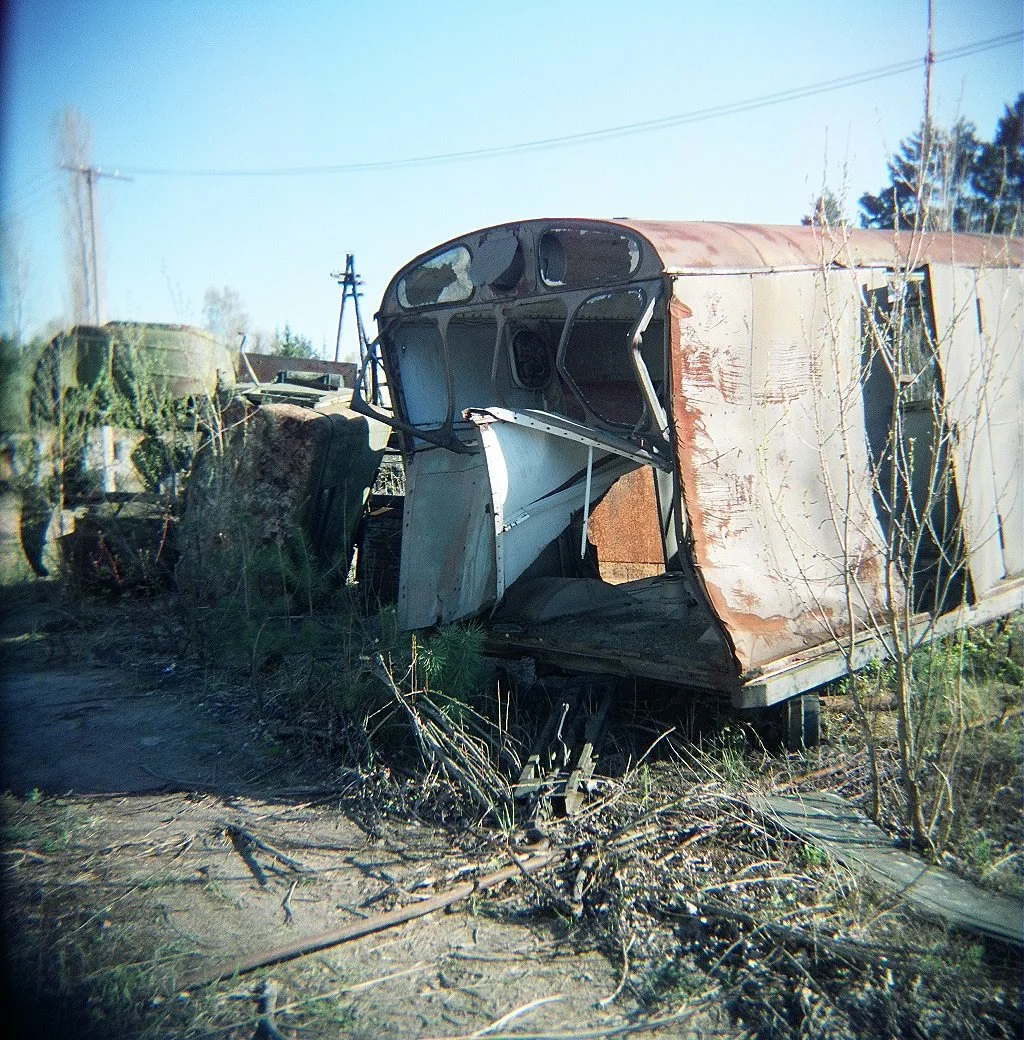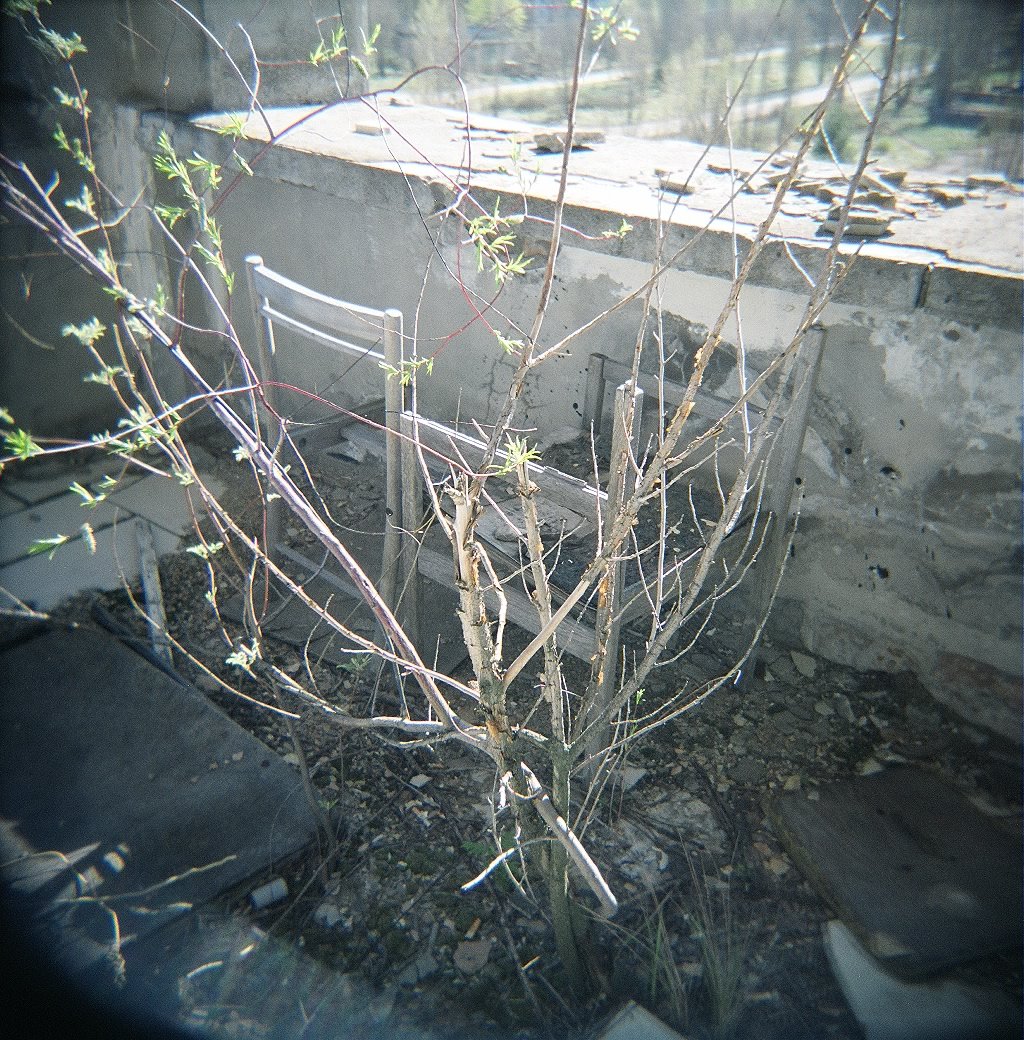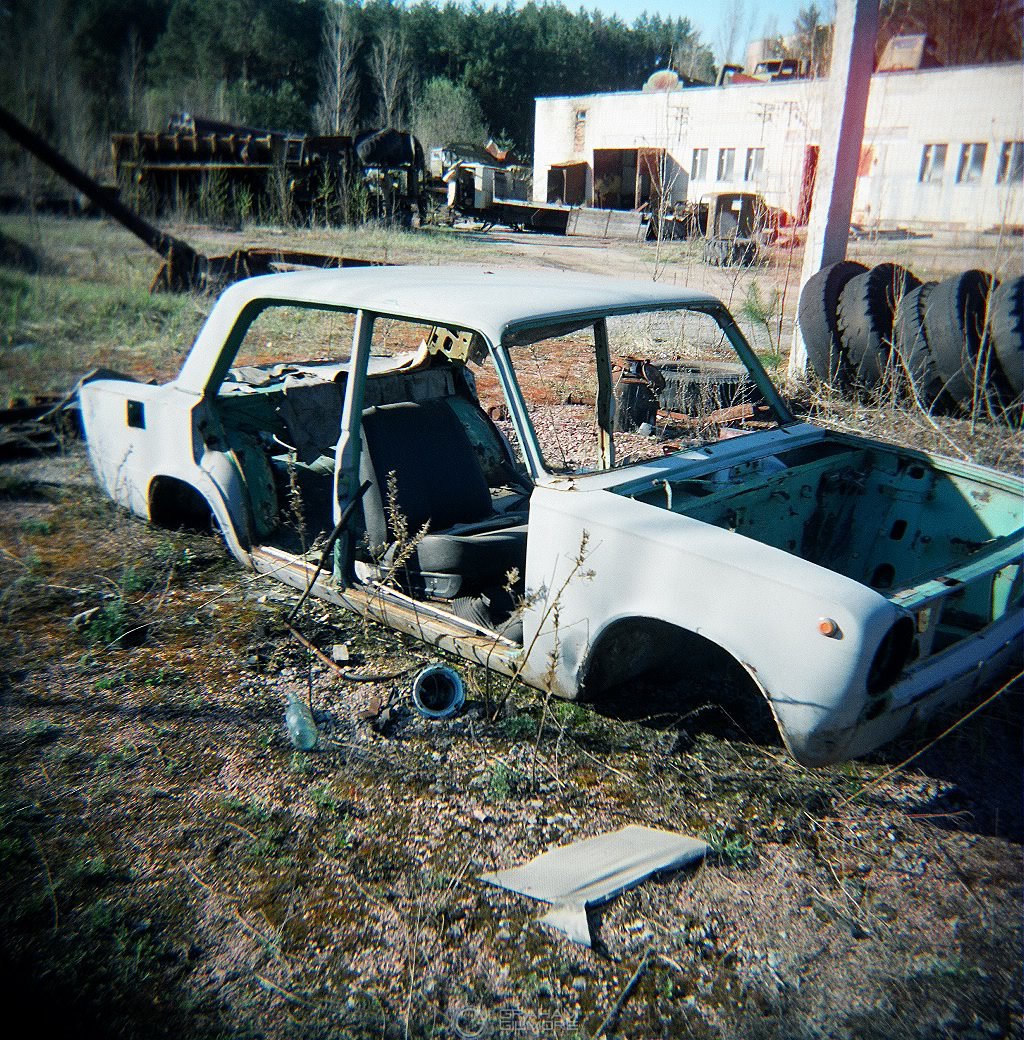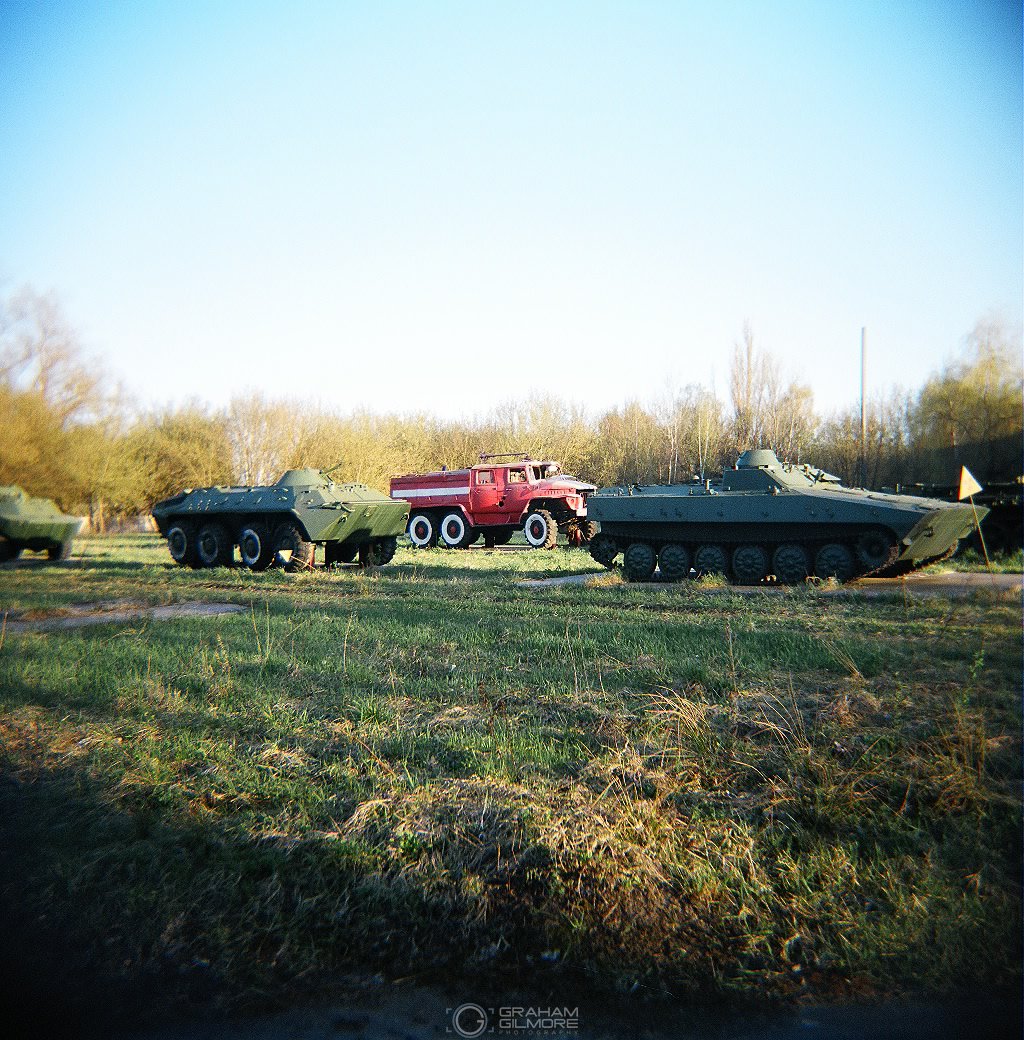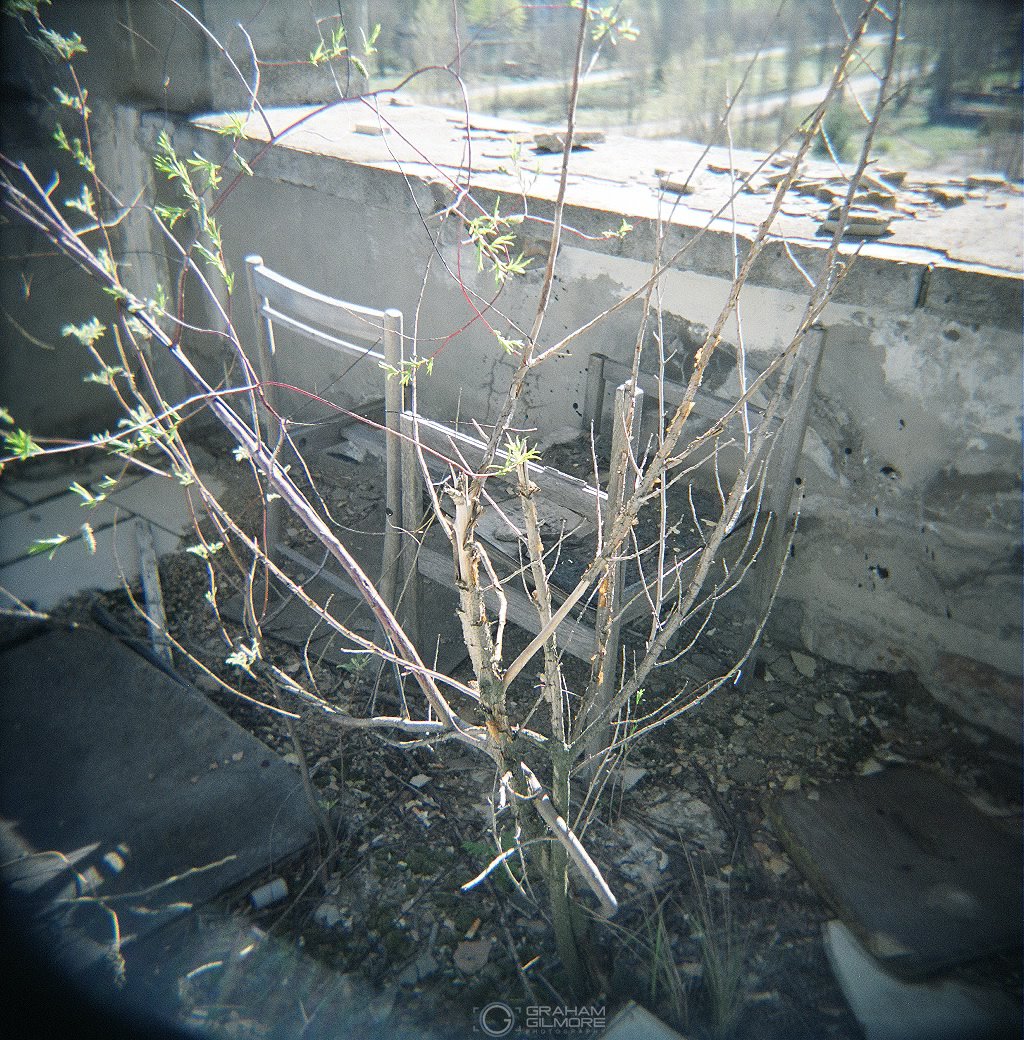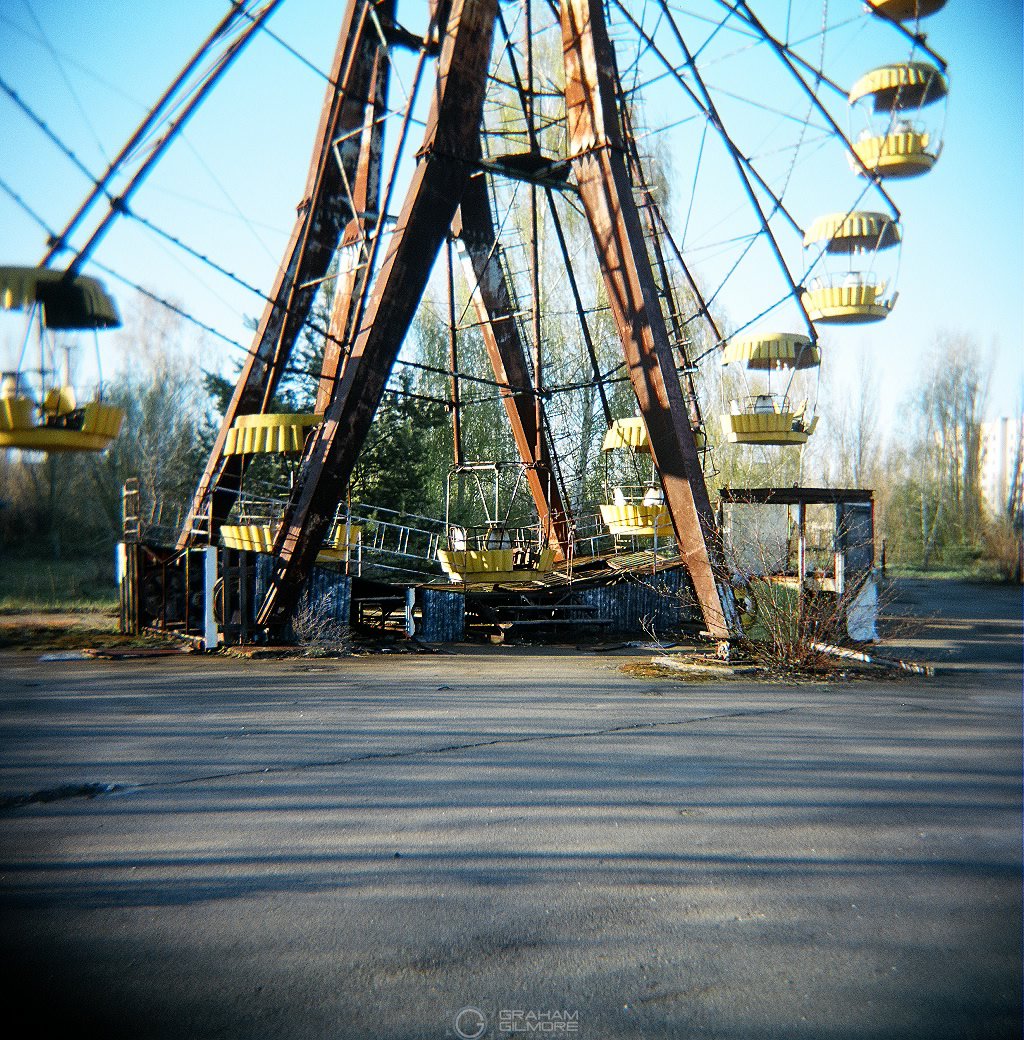The Chernobyl Exclusion Zone
For the final part of my deeper dive into the Chernobyl Exclusion Zone, we head to the outer parts of the zone before our trip ends in Chornobyl town. But first, I've dug up a few more photos for you. Roughly half a kilometer west of the Bridge of Death is Yanov railway station. Access to this area has to be granted by special permission of the ChernobylInterinform, reasons for which are still unclear. Also, the main station building is now a storage area, but for what, they wouldn’t tell us. Fortunately, we were lucky enough to be given permission to explore the yard. Yanov station was the vital passenger pickup point for those arriving by train into Pripyat in the hours after the explosion. Our guide explained that people who arrived here during this time were moved directly from the trains onto buses and sent right back out of the area for safety.
Yanov is an interesting area to explore on foot, the railway lines and what’s left of the platform are still accessible. There are many train cars still sitting around on and off the tracks, and most in a very bad way. Some are extremely rusty and even too dangerous to enter because of contamination. Also, along the sides of the tracks are lots of large (and strange) metal debris similar to that found near the unfinished cooling towers of CNPP. Besides all the obvious hazards were several grass snakes slithering around our feet. After Leaving Yanov we started to head back down towards Chornobyl town.
As we were passing by the power plant our guide stopped the car right beside the red forest, this is considered a high radiation area as it was very close to the explosion. With debris and radioactive particles bombarding these trees from the explosion and later shifting weather, heavily contaminated parts of the forest was razed and buried. He pulls up beside a bush on the side of the road in which he points out as his marker, and as he does this our Geiger counter makes the most alarming noise I've heard it make the whole trip. We stop here for a few seconds before he accelerates rather rapidly and we head south. All the time this was happening I was shooting it with a video camera, you can see the footage by clicking on this YouTube link.
Besides the larger-known towns, there are many rural villages in the Chernobyl Exclusion Zone. It is estimated the total evacuee estimate rose to approximately 116,000 people when combining Pripyat’s 49,000 residents with that of Chernobyl city and surrounding villages. Some villages were razed and buried, while others were left to decay. In the days and months after the accident, there were many residents of the outlying villages who slipped passed border patrols and illegally moved back into their homes. These people are known locally as samosely, which means self-settlers or squatters. We visited the village of Illintsi, once host to roughly 4,000 people and today home to only approximately forty. This part of the trip had us truly looking back in time as the original settlers had known the area many years before Pripyat and the CNPP ever existed. In fact, the CNPP was originally proposed to be only 25km from the Ukraine capital of Kyiv. Experts however remarked that this was too close to the heavily-populated capital and suggested the Chernobyl region. Of course, this later proved to be a wise decision.
The city of Chornobyl (Chernobyl being the old Soviet way of spelling the Ukrainian name) is situated about 14km south of the CNPP. The plant is actually named after the city, which has been settled since the 1100’s, and prior to the accident occupied around 14,000 people. Today the city is home to around 400 who work within the zone: scientists, military, guards and zone staff and administration personnel (chernobylinterinform). The latter are those who take visitors on guided tours and keep a watchful eye on everything that goes on in the zone.
Like Pripyat, the whole city was washed down after the accident, on top of this, top layers of soil were removed and all water piping systems were moved above ground. Despite these efforts, there are still areas of contamination in Chornobyl, but they are well documented and known. Workers here respect these risks and are only allowed to work two weeks on and two weeks off to minimize extended exposure. There are also some who have moved back full-time since the accident — they live in their houses with signs outside reading, “Owner of This House Lives Here” to deter potential looters.
The blue monument in the gallery above stands in Chornobyl city in memory of all the firefighters and liquidators who lost their lives in the aftermath of the explosion. Many are still alive but suffering with illnesses and disabilities related to their heavy radiation exposure both on the night of the accident and in the weeks and months during cleanup. This fitting tribute was actually built by current firefighters of Chornobyl city and it stands in front of their station. In the evenings during our stay in the zone we would walk from the Interinform hotel and across part of the town to the local store where we could buy snacks, drinks, cigarettes and other items. Our guide stayed with us the whole time while out in the city as the military presence in Chornobyl is quite extensive. Anyone unrecognized or found wandering on their own is immediately approached, questioned and better have the relevant documents on their person and a good reason for being there.
Well, we’ve reached the end of my series coverage of Chernobyl Exclusion Zone photography. I hope you've enjoyed looking at them. I've certainly enjoyed going through them and re-editing again. Should you have any questions feel free to email me and ask or leave a comment below. I'll leave you with one final set of images, I took these shots with a Holga 120 film camera. It’s more or less a plastic toy and the results do not hide this fact. This however is what makes the Holga such a great retro film camera. Enjoy, and thanks for reading.



